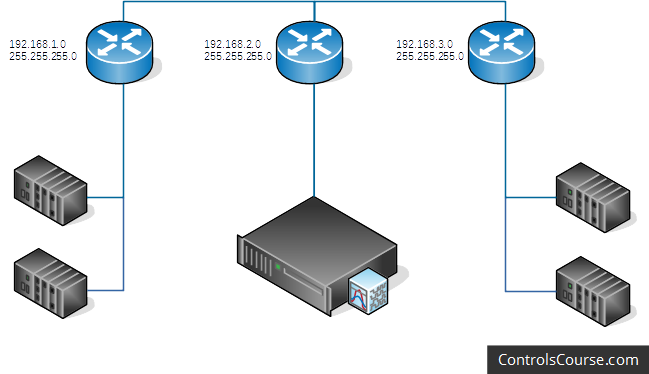Setting up a BBMD-connected network is a manual and somewhat arcane process. The broadcast distribution table is a list of the BBMDs on the network. Each BBMD on each network should have the same broadcast distribution table. Here’s a quick example of a BACnet broadcast distribution table (BDT) that might help clear things up.
The Setup

With the above illustration we have three IP networks separated by routers on a backbone. Let’s say that we have a BBMD on each network, and here are their IP addresses: 192.168.1.50, 192.168.2.50, 192.168.3.50. Let’s also grant that we are using the standard BACnet port, 0xBAC0 (i.e.: 47808).
Example BACnet Broadcast Distribution Table
| BBMD Address | Subnet Mask |
|---|---|
| 192.168.1.50 | 255.255.255.255 |
| 192.168.2.50 | 255.255.255.255 |
| 192.168.3.50 | 255.255.255.255 |
The subnet mask is a bit mask that is applied against the BBMD address. The combination of the two allows the device to find the address to send broadcast packages to. Unless you have routers that permit remote broadcasts to their local networks (rare), you’ll need to broadcast directly to your BBMD. The subnet mask value 255 is the same as saying “I’m a bit mask that does nothing”, so that applied against the BBMD address and a bunch of ones is the same as the BBMD address. If you use the network mask the BBMD will send the messages to the router, which will block them.
[…] BACnet Broadcast Distribution Table Example […]
[…] BACnet Broadcast Distribution Table Example […]